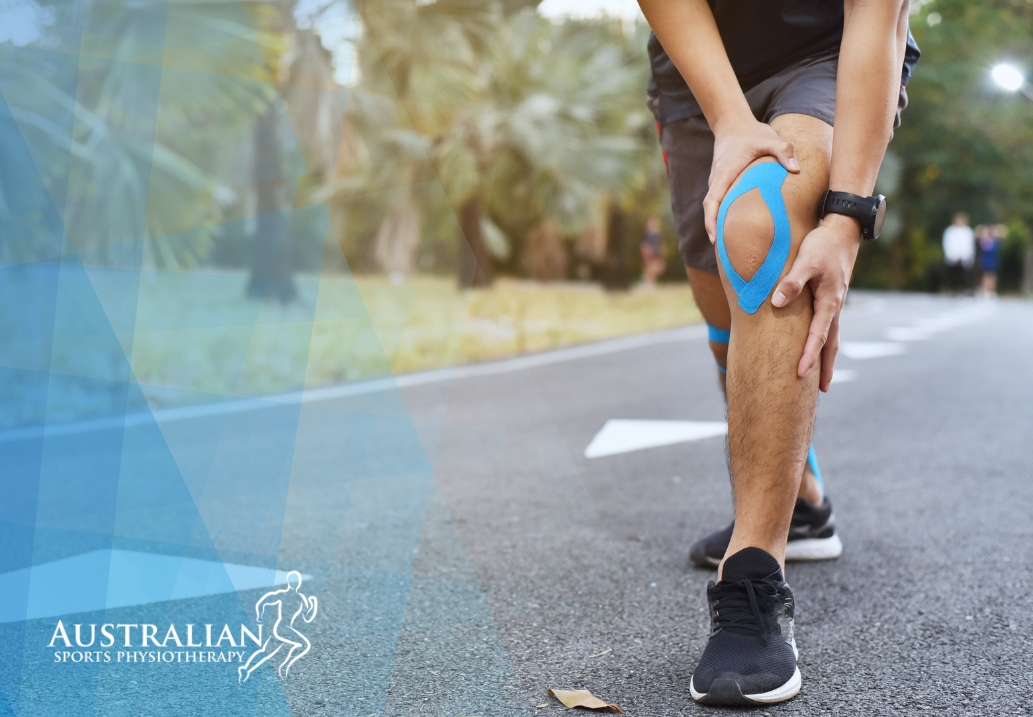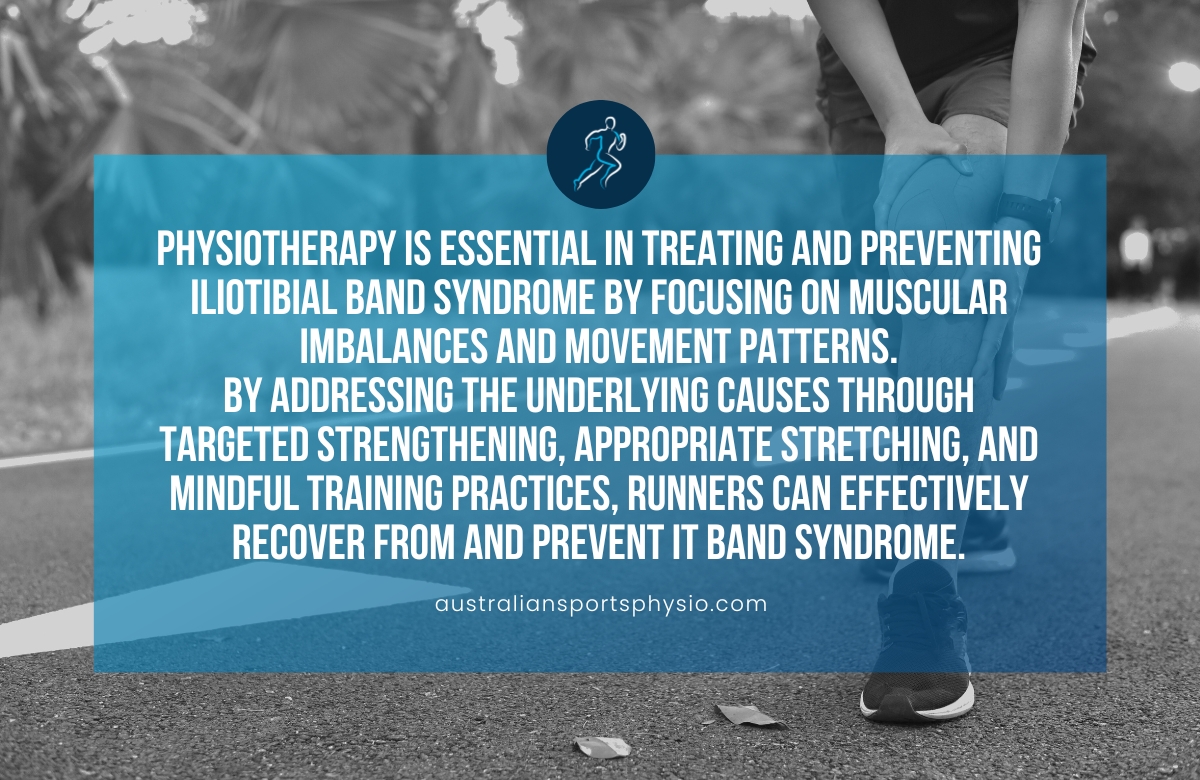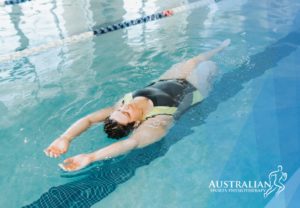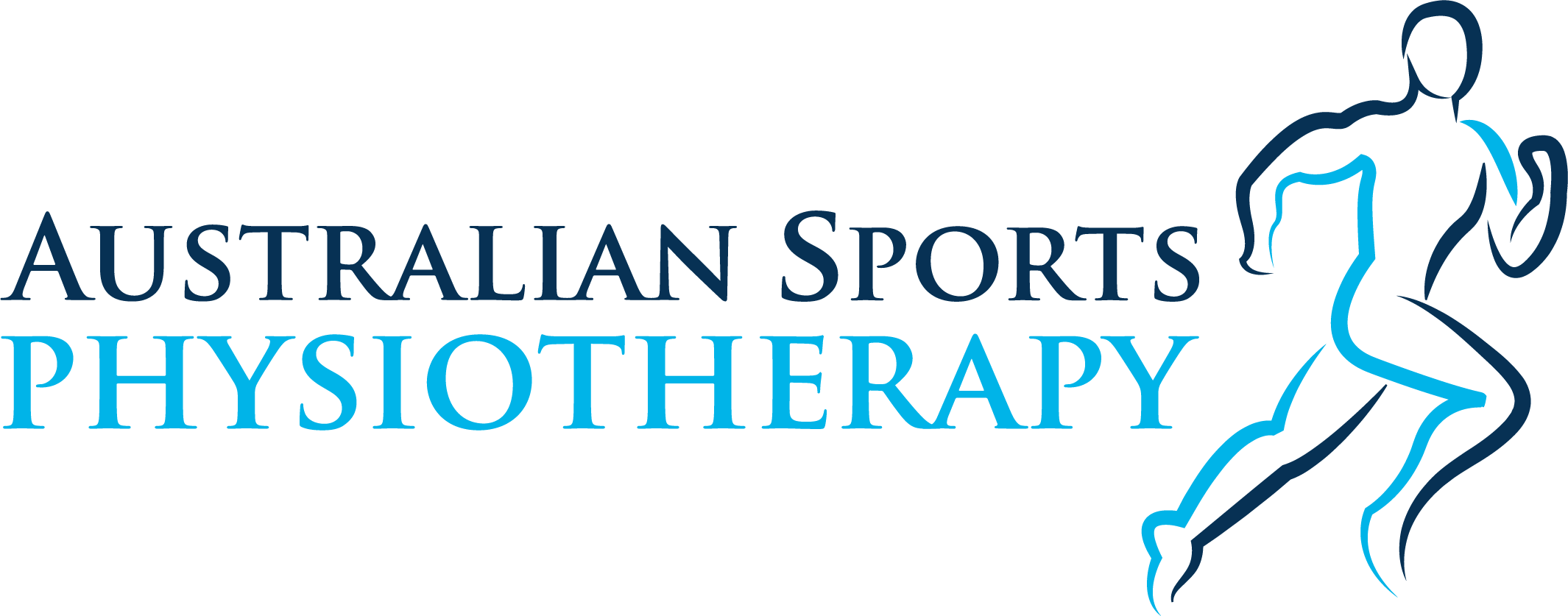Ever felt a sharp pain on the outside of your knee while running, making each step more unbearable than the last? Could it be that your body is sending signals that something is wrong with your training routine?
This condition, often experienced by both novice and seasoned runners, occurs when the connective tissue running down the outside of the thigh becomes inflamed due to overuse, improper form, or insufficient stretching.
If pounding the pavement is causing you pain, it might be time to consider incorporating physiotherapy into your running regimen. Understanding and addressing IT band syndrome with the right physiotherapy techniques can help restore your stride and alleviate discomfort.
What is IT band syndrome?
Iliotibial band syndrome is a common overuse injury among runners, often causing pain on the outside of the knee. While it was once thought to be caused by the tightness of the IT band itself, current understanding points more towards weakness and imbalances in the hip and gluteal muscles, leading to increased compression of a small fat pad near the knee.
Understanding the Iliotibial band
- The IT band is a thick, fibrous band of connective tissue running along the outside of the thigh from the hip to just below the knee.
- Muscles like the gluteus maximus and tensor fascia lata (TFL) attach to the IT band. When these muscles are weak or imbalanced, it can lead to improper leg mechanics during activities like running, causing the IT band to rub or compress structures around the knee joint.
Common causes of Iliotibial band syndrome in runners
- Weak hip abductor muscles (gluteus medius and minimus).
- Overuse/overtraining (increasing mileage or intensity too quickly).
- Running on a tilted or curved surface (like a crowned road or banked track).
- Excessive downhill running.
- Worn-out or inappropriate running shoes.
- Poor running form (e.g., “crossover” gait where feet cross over the midline).
Physiotherapy for IT band syndrome in runners
A. Rest and pain management (acute stage)
- Reduce aggravating activities: Temporarily limit activities like running that exacerbate pain. Engage in low-impact cross-training, such as swimming.
- Ice therapy: Apply ice to the painful area for 3-5 minutes to alleviate pain and inflammation.
- Manual therapy: A physiotherapist may perform hands-on techniques or Dry needling to release tight muscles and fascia around the hip, thigh and IT Band.
- Foam rolling: Although you can’t effectively stretch the IT band, foam rolling surrounding muscles (glutes, quadriceps, TFL, hamstrings) can alleviate tension. Avoid rolling directly on the IT band if it causes pain.
B. Strengthening exercises
Strengthening the hip abductors (especially gluteus medius and minimus) and gluteus maximus is crucial, as these muscles stabilise the pelvis and control leg movement during running. Exercises progress from non-weight-bearing to dynamic activities as pain decreases.
C. Stretching
While the IT band is tough and doesn’t stretch significantly, stretching related muscles is essential:
- Gluteal stretches: Figure-4 stretch—Lie on your back, cross one ankle over the opposite knee, and pull the bottom thigh towards your chest.
- Hip flexor stretches: Use kneeling or standing stretches to address tightness in the hip area.
- TFL stretches: Standing side bends or crossed-leg forward folds can effectively target this muscle.
Movement pattern retraining and gait analysis
A physiotherapist can conduct a gait analysis to identify biomechanical issues contributing to iliotibial band syndrome. They may recommend drills to improve foot placement, mitigate “crossover” gait, and adjust stride length or cadence.
Maintaining good knee alignment during functional movements such as squats, lunges, and running is essential for prevention and recovery.
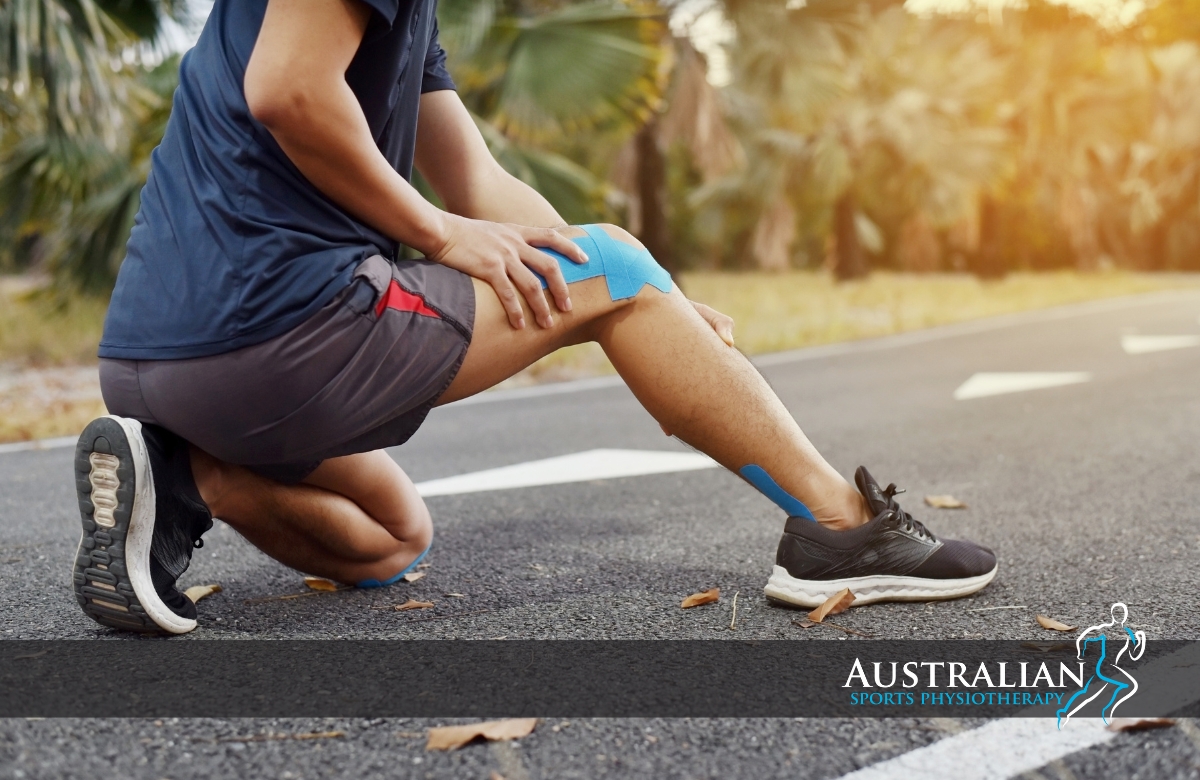
Final thoughts
Physiotherapy is essential in treating and preventing iliotibial band syndrome by focusing on muscular imbalances and movement patterns.
By addressing the underlying causes through targeted strengthening, appropriate stretching, and mindful training practices, runners can effectively recover from and prevent IT band syndrome.
Book an appointment with one of our experienced physiologists today for a comprehensive assessment and customised treatment plan.

